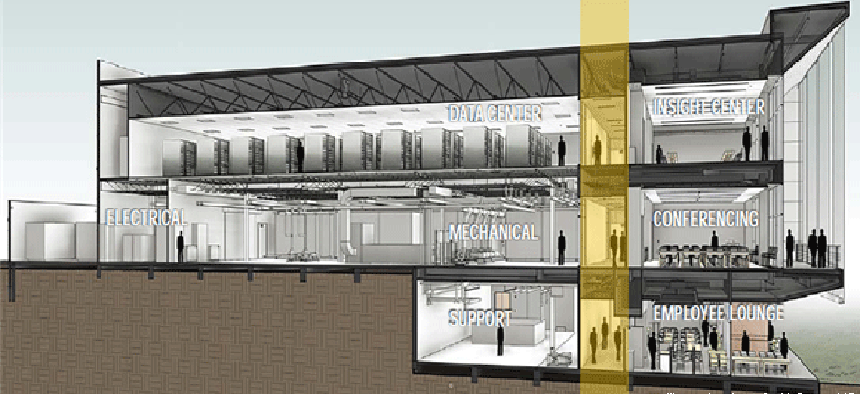The world's most efficient data center


Connecting state and local government leaders
The National Renewable Energy Laboratory will open a facility this summer that will reuse every bit of its energy.
When we recently reported on some ways that data centers could be made more efficient with a couple design changes, several alert readers pointed out that the National Renewable Energy Laboratory, part of the Energy Department, was working on a new data center that incorporates many of those changes -- and more.
When it comes online this summer, the Energy Systems Integration Facility could be the most efficient data center in the entire world.
Ironically, but also by design, the new super-efficient data center in Golden, Colo., is designed for researching how to best use renewable energy. Specifically, the facility will carry out research, development and megawatt-scale testing of critical transmission and distribution-level components of future electric supply and demand systems. It’s a super-efficient center designed to make electricity more efficient.
Every bit of energy at the facility is being re-used in some way. For example, it takes a page from the Royal Institute of Technology in Stockholm, which uses hot water from the cooling process to heat its facility instead of just bleeding it off as a waste product inside big cooling towers. The Energy Systems Integration Facility does that, but also directs hot water under its sidewalks, melting snow and ice away during the Colorado winters.
In fact, the computers at the facility will all be water-cooled. Water will enter the facility at about 75 degrees Fahrenheit and leave at about 120 degrees. That should provide plenty of cooling for systems and also plenty of heat energy to be used for other purposes around the building. As another advantage in energy savings, running pumps to move the water takes up much less energy than running air-conditioners.
The $135 million facility will be 185,000 square feet when complete. That space will be divided into 14 fully equipped laboratories, the Insight Visualization Center, High Bay Control Room, and several outdoor test beds. The outdoor test areas will be used to experiment with some of the new data center designs, like the one Microsoft is building in Virginia. About 200 people will work at the new center.
NREL released specifications regarding the supercomputer that the new facility will house. Although it will begin at teraflop-speeds, the facility expects its new computer to reach petascale capacity by the summer. The data center will comprise HP Proliant SL230 and SL250 Generation 8 servers based on eight-core Intel Xeon E5-2670 processors. It will also incorporate next-generation servers using Ivy Bridge architecture-based Intel Xeon and Intel Many Integrated Core architecture-based Xeon Phi coprocessors.
Unlike most data centers, which operate on 208-volt feeds, the new NREL facility will run on high-voltage 408 electric lines. Thanks to a unique power bus that runs throughout the complex, every lab within the ESIF can run equipment being tested from two AC and two DC feeds. The bus also serves to connect multiple sources of energy and will be able to network the testing being done in all the labs. The goal is to test and develop more efficient electronic gear.
In fact, Energy expects its new laboratory to achieve a power usage effectiveness rating of 1.06 at startup. Given that a perfect score is 1.0, and almost no other data centers get close to it, the ESIF should prove to be a model that other centers can emulate.
So with the new Energy Systems Integration Facility, we have a government laboratory and data center that is highly efficient and whose main purpose is to find ways to save money and make energy usage even more efficient nationwide. That’s about as green as it gets in the world of data centers.




